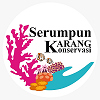The Abundance and Distribution Patterns of Asiatic Hard Clam (Meretrix meretrix) in The Pukan Beach Coastal Area, Bangka Regency
DOI:
https://doi.org/10.61548/cmj.v1i2.11Keywords:
Abundance, Lokan (Meretrix meretrix), Pukan Beach, Distribution PatternAbstract
The dynamics and diversity of bivalve resources can be influenced by various human activities at the beach. At Pukan Beach, Activities such as harvesting Asiatic Hard Clam (Meretrix meretrix), local community tin mining, shrimp pond farming, and inputs of organic materials from surrounding rivers and freshwater sources can affect the presence of Asiatic Hard Clam in its habitat. This research aims to analyze the abundance and distribution patterns Asiatic Hard Clam and the environmental factors influencing them. Data collection was conducted from February to April 2023 at Pukan Beach, Bangka Regency, using a systematic method and 2 x 2m2 quadrats consisting of 4 stations with a total of 48 sampling plots. The observed environmental parameters included water temperature, salinity, water pH, substrate, dissolved oxygen (DO), calculation of total organic matter (BOT), and soil pH, which were then analyzed using principal component analysis (PCA).The research findings showed that the lowest abundance values were found at Station 4, while the highest were at Station 3. The average clam abundance at Pukan Beach ranged from 0.03 to 0.22 ind.m-2, indicating a minimum or low abundance level, with an average value of Ip was 0.05, suggesting a clustered distribution pattern. Based on the principal component analysis (PCA), the environmental parameters that most influenced clam abundance were BOD and DO, and the most suitable habitat preference for the clams was identified at Station 4.It is recommended that clam harvesting be based on the size of the shell's length and width, specifically during the adult or mature stage when individuals are larger than 3.10 – 4.00 cm. Smaller clams should be returned to their natural habitat to allow for growth and reproduction.Downloads
Download data is not yet available.
Downloads
Published
2023-12-04
Issue
Section
Articles
License
Copyright (c) 2023 Coastal and Marine Journal

This work is licensed under a Creative Commons Attribution-ShareAlike 4.0 International License.

This work is licensed under a Creative Commons Attribution-ShareAlike 4.0 International License.
Copyright Transfer Terms
- The author in submitting online understands that if the manuscript is accepted for publication, the copyright of the manuscript will be given to the Coastal and Marine Journal as the publisher of the journal.
- Copyright includes the exclusive right to reproduce and distribute articles in all forms of media, including reprints, photographs, microfilm and other similar reproductions, as well as their translations.










